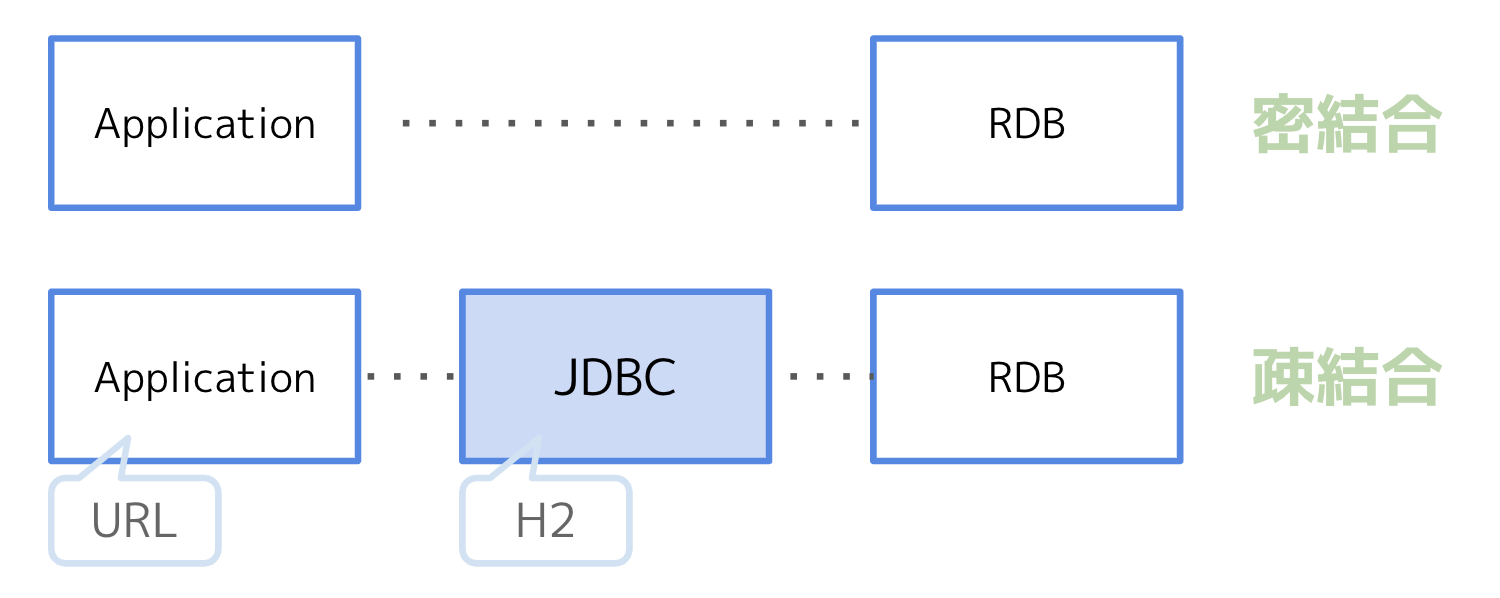[Java] Relationship between H2DB and JDBC
H2 Database features
- Benefits of H2
- ** Can be incorporated into Java programs **
- Embedded and server modes; in-memory databases
The main features of H2 are:
- Very fast, open source, JDBC API
- Embedded and server modes; in-memory databases
- Browser based Console application
- Small footprint: around 2 MB jar file size
| H2 | Derby | HSQLDB | MySQL | PostgreSQL | |
|---|---|---|---|---|---|
| Pure Java | Yes | Yes | Yes | No | No |
| Memory Mode | Yes | Yes | Yes | No | No |
| Encrypted Database | Yes | Yes | Yes | No | No |
From H2 Database Engine
- ** Pure java **: Made in Java
- ex: H2/Derby/HSQLDB
- Since it can be embedded in your own application, it will start up automatically when the application is started **
- Embedded / server modes / in-memory databases can be used
server modes
- If you start the h2 server, you can access it from other servers as well.
in-memory databases modes
- Run in-memory
- Start with
h2.start ();in a Java program on the Java virtual machine - In-memory data is not saved in HDD or externally but saved in memory when data is ejected by SQL statement with insert statement.
- ** Disappears on reboot **
- ** Cannot be seen from other servers because it is only in memory **
- In-memory, the DB will be cleared the next time you start it, so it is often used in development!
Embedded modes
- Like in-memory, it runs inside a Java program on a Java virtual machine
- Data is saved externally on HDD / SSD
- ** Can be accessed from outside **
- ** Data remains even after a crash **
- The same unit test cannot be performed if the DB is updated when the DB unit test is performed.
Relationship between H2 and JDBC

-
In the past, there were many cases where the DB was directly accessed from Application using a library specific to the DB such as Oracle ** (such as using OracleLib in C ++).
-
With this method ** DB cannot be changed freely and products cannot be rearranged ** (Oracle version or MySQL version cannot be used)
-
→ In Java ** JDBC is solved! ** **
-
DB access basics
-
JDBC: ** SQL abstraction mechanism **
-
Access the specified DB (Oracle, etc.) based on JDBC
jdbc_urlinstead of hitting Oracle directly -
A further ** abstraction ** by accessing the Oracle library by JDBC and accessing the RDB
-
If you read
jdbc_urland write h2, JDBC will access H2DB through the h2 library. -
The app and RDB were directly connected (** tightly coupled ), but now the app and RDB are ** indirect ** via JDBC ( abstraction module **)! (Becomes ** loosely coupled **)
-
The app doesn't have to be involved in what the DB is, it only needs to know where to access it by URL (JDBC accesses the DB by URL)
-
No matter what the RDB is **, the app doesn't need to change it and JDBC will do it nicely **!
Recommended Posts